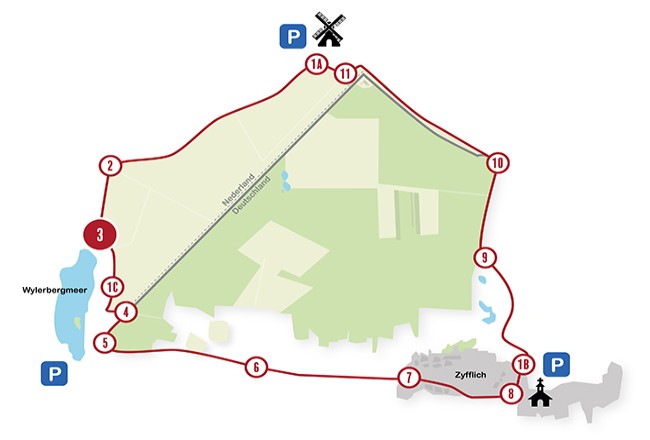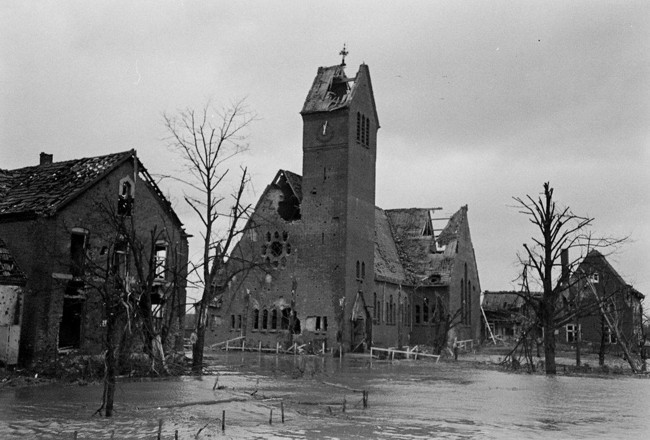The flooding
In 1944/1945, the region, including the area around the Thornsche mill and Zyfflich, was subjected to military violence that didn’t limit itself to combat operations and bombings. During Operation Market Garden and Veritable in 1944, a number of dikes were destroyed on the 2nd of December by the German occupying forces, in order to flood the entire plain. This was done in order to delay the advancement of the Allied armies.
Heavy rainfall, that had started a few days before the major attack on the Rhine area, had resulted in rising water levels in de river. On the 8th of February 1945, at the outset of Operation Veritable, the Germans blew up the dike near the northern sluice. Shortly after that, a section of the Querdamm collapsed as a result of the pressure caused by the rapidly rising water in combination with its poor condition due to foxholes and grenade fire.
The entire area, bordered by Nijmegen, Rhine and Waal, and the German ridge, was flooded all the way up to Kalkar. The Betuwe region suffered the same fate as well. The water in the river, and therefore also in the polders, very rapidly reached a high level that hadn't been seen since 1930.
The purpose of this was to slow down the advancement of the Allied armies. For a number of dikes, blowing them up did not lead to the desired result. Amphibious combat vehicles were able to traverse the flooded section of the Siegfried Line with ease. The German defences were also partly flooded.
In anticipation of the flooding, most residents had already left their homes under pressure of the hostilities.
Where life had already been made near impossible, the water delivered the final blow.









